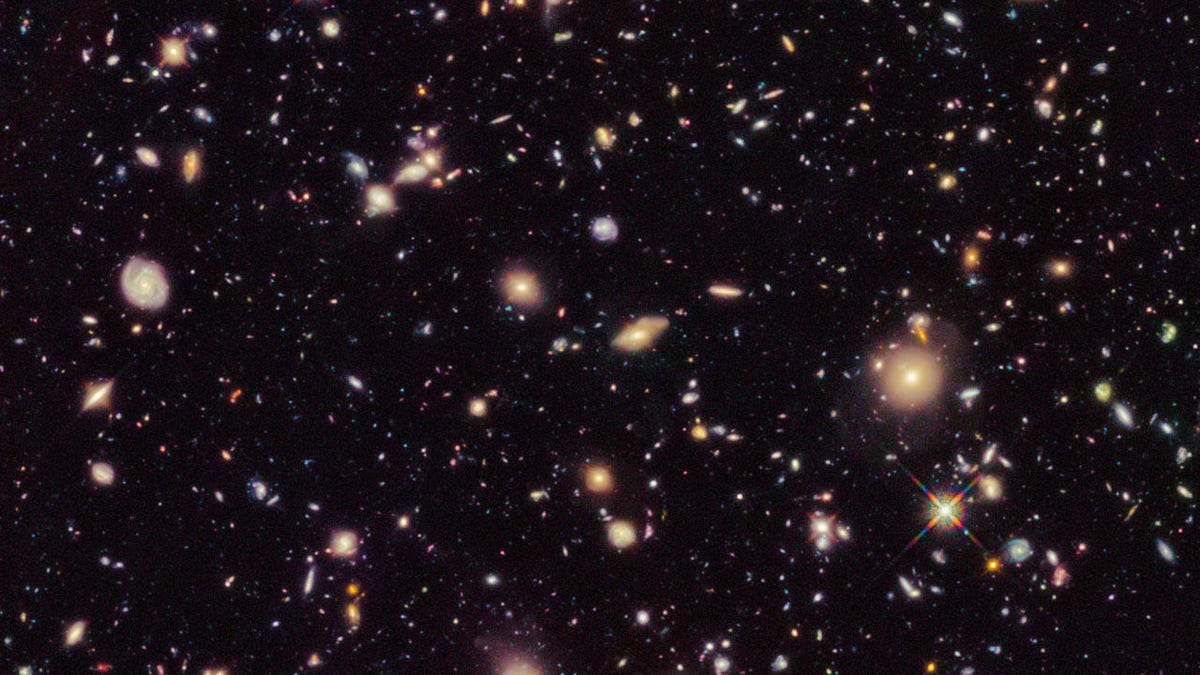Ancient, 'invisible' galaxies from beginning of the universe spotted for the first time
Like car keys, massive, ancient galaxies are always in the last place you look.

The Hubble Ultra Deep Field, snapped in 2012.
NASA's Hubble Space Telescope has provided scientists with some incredible photographs of the distant universe, but it can't see everything. Populations of galaxies from the very early universe are invisible to Hubble "eyes", so spotting them requires a different set of peepers. An international collaboration of researchers have used the Atacama Large Millimeter Array (ALMA) in Chile as those eyes, looking back at the early universe and finding ancient galaxies that could reveal more about the nature of dark matter and supermassive black holes.
The research, published in the journal Nature on Aug. 7, found 39 ancient, huge galaxies from around 2 billion years after the dawn of the universe which aren't bright enough to see in the visible light spectrum. By using ALMA and NASA's Spitzer space telescope, which observe the universe in infrared wavelengths, the research team were able to confirm the existence of the galaxies they suspected were hiding out at the farthest edges of the cosmos.
"The light from these galaxies is very faint with long wavelengths invisible to our eyes and undetectable by Hubble," explained Kotaro Kohno, a co-author on the paper and researcher at the University of Tokyo, in a press release. On top of that, they are incredibly dusty, huge galaxies, which obscures them from Hubble's view.
While the researchers can't tell exactly how old the galaxies are or what makes them up, they will shift the current understanding of galaxy evolution. The amount of mammoth, dust-filled galaxies observed exceeds what was expected with our current models of the universe, challenging the current hypotheses of how these massive galaxies evolve.
Their discovery also opens up the possibility of studying other cosmic phenomena such as supermassive black holes, which scientists know reside in the center of big galaxies, and also the enigmatic dark matter, theorized to make up the majority of matter in our universe.
The James Webb Telescope, NASA's next-gen set of eyes to study the universe, is due to launch in 2021 and will be key to further understanding the galaxies spotted, providing insight into what makes them up. Webb is planned as a successor to Hubble and will be able to see older stars with more clarity than Hubble or Spitzer could achieve.

